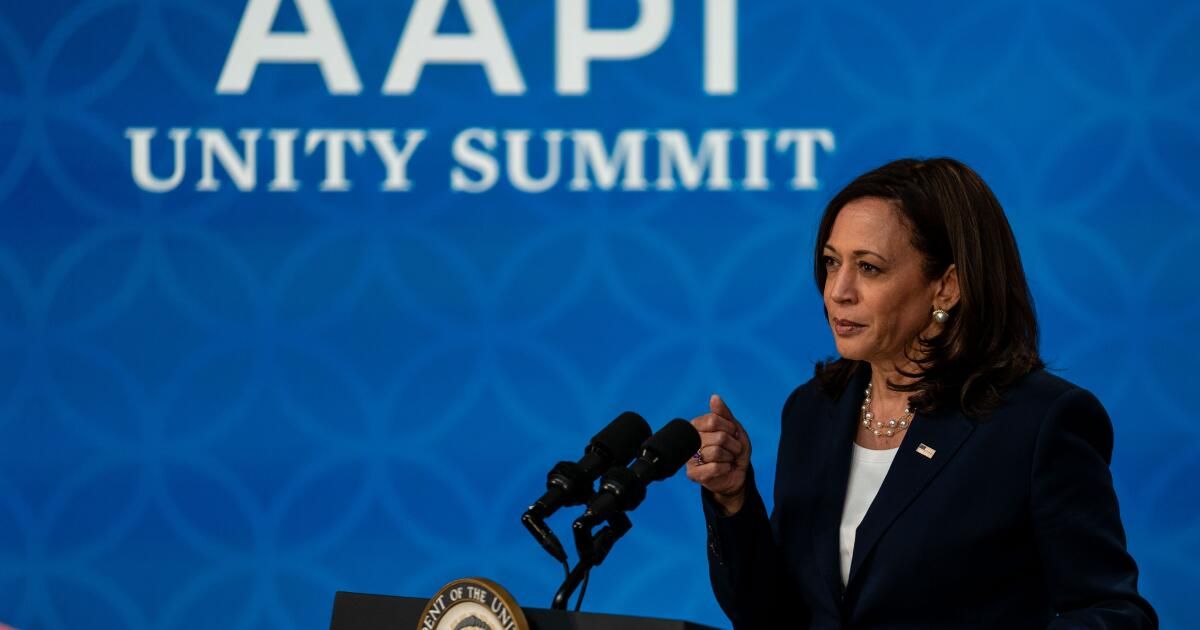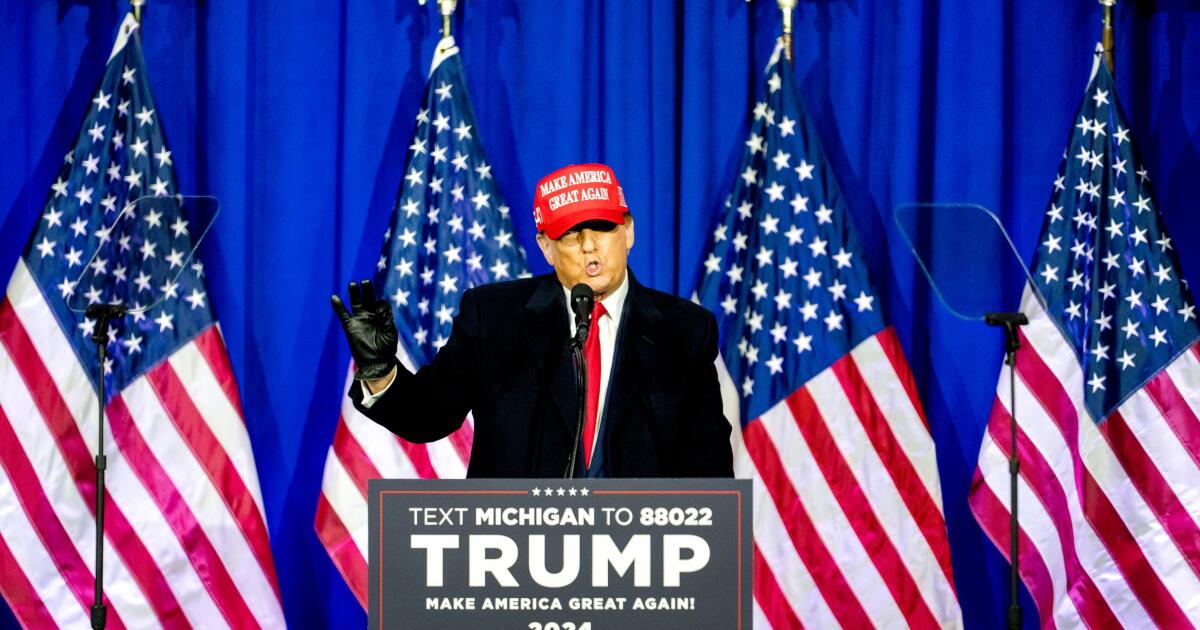There is more than 700 Asian American elected officials across the country, including presumptive Democratic presidential nominee Kamala Harris and 20 members of Congress. From the The data shows a toward the left bent between You might expect representation of Asian Americans of Gen X and younger to be exclusively Democratic, but Asian Americans have long been an energetic presence in the Republican Party. It’s worth asking how attractive the GOP will seem to them in November.
George H.W. Bush won this voting block 32 years ago. He also did it Bob Dole In 1996, Elaine Chao, Nikki Haley, Vivek Ramaswamy, and now Usha Vance have become household names. Though Haley and Ramaswamy failed to win the Republican Party’s presidential nomination against Donald Trump, they did secure speaking slots at the 2024 Republican National Convention to demonstrate their commitment to conservatism (however defined these days). They, along with California Reps. Vince Fong, Young Kim, and Michelle Steel and Asian American politicians elsewhere, underscore the growing visibility of this demographic within elite GOP circles.
The long history of Asian-American activism from the right began with Hiram FongFong, who was born in Hawaii to Chinese immigrants, became a U.S. senator from the new state in 1959 and earned a reputation as a moderate during his 18-year tenure. Fong secured funding to improve the islands’ infrastructure, helped remove barriers to immigration and backed sweeping civil rights legislation. He was also a staunch supporter of the Vietnam War and President Nixon, even in the aftermath of Watergate.
The year Fong left office, YES HayakawaHayakawa, a Canadian-born Japanese American, began his term as a U.S. senator from California as a somewhat inscrutable Republican. A self-proclaimed champion of racial minorities, he nonetheless opposed the creation of ethnic studies in 1969 as president of San Francisco State College (now the University), a position to which he was appointed by then-Governor Ronald Reagan. Hayakawa made no secret of his Japanese heritage, but he also promoted assimilation and wanted English to be the official language of the United States. In the late 1960s and 1970s, Hayakawa’s identity politics were acceptable to a Republican Party that was becoming increasingly conservative thanks to the “Southern strategy” (a GOP tactic that used race to appeal to aggrieved white Sunbelt voters) and a burgeoning evangelical movement.
There were also Asian American bureaucrats, diplomats, and lobbyists who influenced the right from behind the curtain. These efforts included Anna Chan Chennaulta journalist turned socialite whose political and military ties through her husband, U.S. Major General Claire Chennault, gave her access to Republicans such as Richard Nixon. In 1968, in the midst of the race for the White House, Anna Chennault served as an intermediary between Nixon and South Vietnam. Tradition remains controversialExperts have stated She helped stall peace negotiations. Between embattled Democratic President Lyndon B. Johnson and South Vietnamese leaders, she and other Nixon supporters feared a deal would help Democrat Hubert Humphrey win the election. Nixon won. Long after the Chennault affair, she remained a reliable ally of the Republican Party, raising funds for the party and advising Asian-American Republicans.
In the 1980s and 1990s, the Republican Party made significant gains among Asian American voters thanks to efforts by former officials in the Nixon, Reagan, and Bush administrations to improve U.S.-Asian relations, particularly with China. In addition, the demographic outreach initiative promoted by Republican National Committee Chairman Lee Atwater (who, paradoxically, also encouraged the use of coded messages on the campaign trail) brought Asian Americans into the fold.
But by the mid-2000s, despite the prominence of figures like Matt Fong, Bobby Jindal, Jay Kim and Pat Saiki, Asian American support for the Republican Party and their overall presence within the party's broader apparatus waned. Directed appeals Democratic Party activists placed Asian Americans firmly in the blue column. Democrats’ positions on education and health care, and the party’s overall image as more racially and religiously inclusive, appealed to recent immigrants and younger voters. By the time George W. Bush finished his first term, it seemed that the Republican Party had all but abandoned the Asian American electorate.
Then there was another turn. In 2013, after Mitt Romney's failed presidential bid and the party's tepid election results, the Republican National Committee published the Growth and Opportunities Project (also known as the “RNC autopsy”) that suggested a renewed focus on people of color. The RNC hired dedicated staff to help with Spread among Asians and Americans For the next election cycle, though inconsistently, there is a push to increase turnout in key districts and states where these votes were crucial. These include Georgia, Nevada, Ohio, Pennsylvania, Texas and Virginia, among others. State and local parties have also attempted to reach out directly to Asian American Republicans and place them on the ballot. leadership roles.
Some of these initiatives appear to have worked. Since 2020, despite the Trump administration's rhetoric calling COVID-19 the “Chinese virus” and the resulting rise in hostility toward Asians, violenceThere is an emerging conservative element within Asian Americans.
Not all are registered Republicans, and these conservative activists are more common in areas with larger Asian American and Pacific Islander populations. Many have become involved in local politics, such as dispossession progressive district attorneys and remembering liberal school board members. The increasingly progressive priorities of the Democratic Party have hurt some Asian Americans, particularly immigrants and refugeesas a reminiscence of socialism or communismideologies that are often associated with violent regimes and restricted freedoms in the home country. In addition, some Asian Americans argue that diversity, equity and inclusion initiatives overlook Asian Americans or instill anti-American sentiments; some oppose affirmative action and similar programs or think that authorities have not countered violence against Asians strongly enough, pushing them to the right.
In fact, in the 2020 and 2022 elections, Democrats won Asian American votes In the national elections, Republicans won by a noticeably smaller margin than in previous years. November will give us an idea of whether this trend will continue in favor of the Republican Party or will once again tilt toward unconditional support for the Democrats.
James Zarsadiaz is an associate professor of history at the University of San Francisco and the author of “Resisting Change in Suburbia.” He is currently working on a book about Asian American conservatism since the Cold War.












